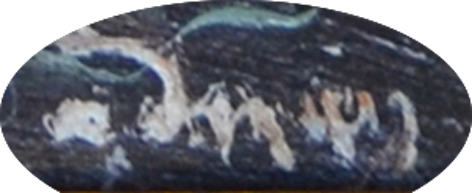

(Chatou, 1880- Garches, 1954)

André Derain was born on June 10, 1880 in Chatou in Ile de France (Yvelines) of cremiers parents who did not oppose his vocation as a painter. He painted his first paintings at the age of 15 and entered the Académie Camillo in 1898 where he studied with Eugène Carrière.
In 1900, he met Henri Matisse by copying paintings at the Louvre and immediately became friends with him. In the same year, he shared a studio with Maurice de Vlaminck and began to paint landscapes. In 1901, he discovered the art of Vincent Van Gogh, which would influence him enormously in the later part of his career. Without forgetting of course the strong influence of the Neo-Impressionists and especially Paul Cézanne. But it was in 1905 that his style truly asserted itself and that he began to make himself known to the general public with brightly colored paintings, simplified drawing and clear composition. The same year, he exhibited at the Salon des Indépendants, then at the Salon d'automne, in the room called "the cage aux fauves". He then became Matisse, the greatest representative of Fauvism, but by 1906 he was influenced by the work of Paul Gauguin and the colors of his paintings became less vivid and radiant. In 1909, Derain illustrated Guillaume Apollinaire's first book of poetry entitled L'Enchanteur pourrissant, as well as a collection of poems by Max Jacob in 1912.
From 1907 to 1910, he frequented the artists of the Bateau-Lavoir: Braque, Apollinaire, Van Dongen, Max Jacob and above all Pablo Picasso who influenced him greatly, experimenting with both pre-Cubism (simplification and geometrization of forms ), as well as scultpure. But as early as 1911, he returned to a more traditional style using perspective and chiaroscuro, referring to the old masters. After the war, he worked with Diaghilev and the Ballets Russes to create numerous sets and costumes for the play Boutique fantasque (1919). In 1928, he received the Carnegie Prize and began to exhibit throughout the world: in London, Berlin, Frankfurt, Düsseldorf, New York and Cincinnati.
Then came the Second World War where he made the unfortunate mistake of accepting an invitation for an official visit to Germany in 1941, which earned him the status of a collaborator and a non-grata person after the Liberation. Moreover, following the war, he no longer presented his works to the public.
He died on September 8 in 1954 from a car accident at Garches in his house in Chambourcy (Hauts-de-Seine). A large part of his work (80 paintings, 77 sculptures, drawings, but also objects of primitive art having belonged to him), are now visible in the museum of modern art of Troyes.